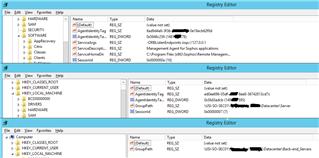Hi All,
We have a SEC running and we use the package deployment tool to distribute the installations. Installations are containing RMS and configured to point to a specific group. At this moment we are experiencing problems with this functionality as new clients are Always showing up in the unassigned group. Even though we are sure the package deployer settings for additional properties is setup the correct way! It has been working before.
Has anyone a hint on where to start troubleshouting?
Thank you in advance.
Mark
This thread was automatically locked due to age.




